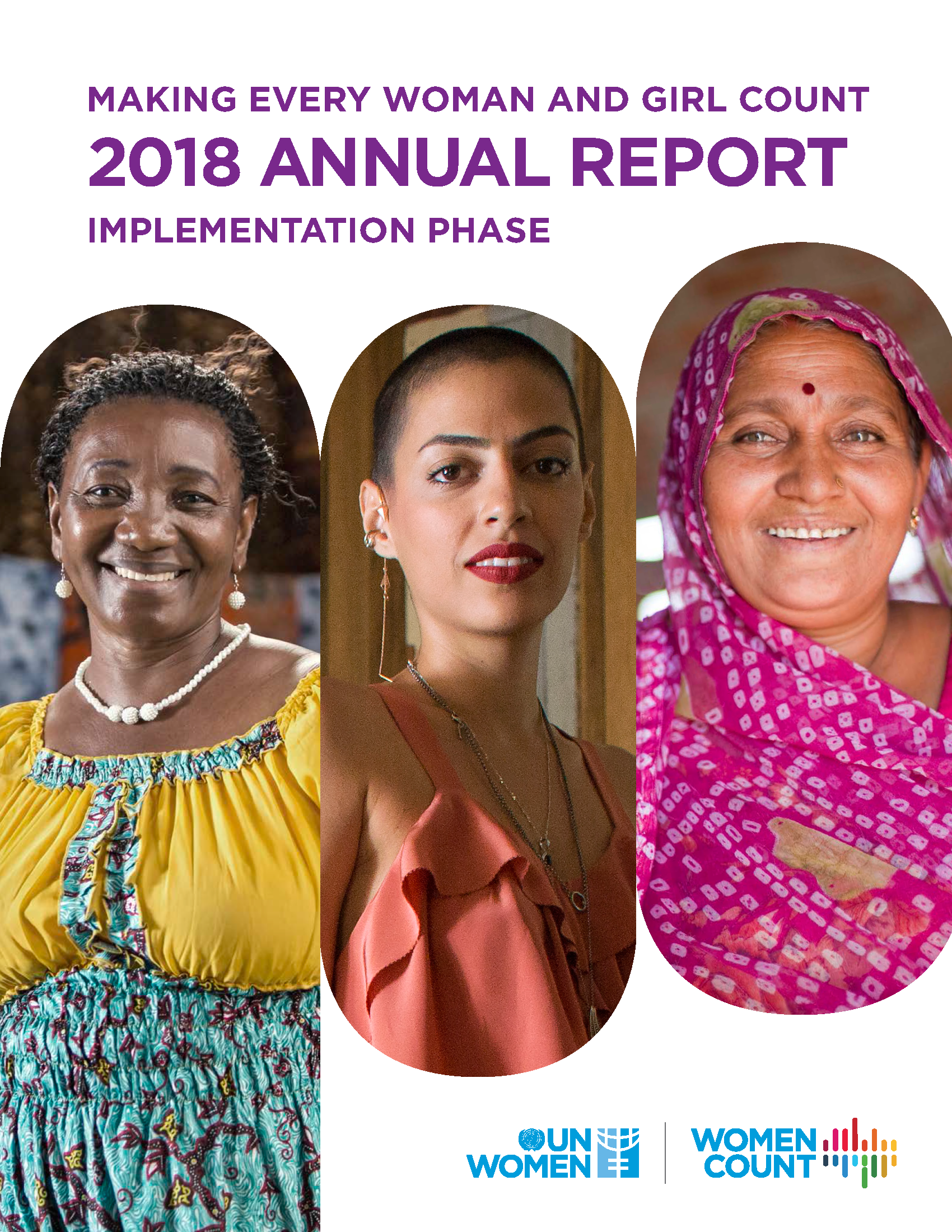
This third edition of the Women Count Annual Report provides an overview of key achievements in 2018. it presents an update on resource mobilization, stakeholder engagement and advocacy-related activities and an analysis of lessons learned from the past two years of implementing the programme, as well as plans for 2019. Some new features include: an indicator dashboard showcasing results achieved per project; and narrative summaries of progress achieved by each project at the global, regional and country levels.
Key Highlights
At the country level:
Five pathfinder countries conducted national gender statistics assessments, developed detailed strategies and began implementing activities.
Three countries – Kenya, United Republic of Tanzania and Uganda – strengthened institutional mechanisms, including integrating gender equality in national statistics strategies, establishing coordination mechanisms for gender statistics at all levels of government, and committing to regular monitoring of SDGs and national policies.
Six new surveys were supported in Albania, United Republic of Tanzania, Morocco, Uganda and Georgia to address key data gaps and strengthen countries’ capacities to monitor the SDGs.
The technical capacities of 554 data producers and 210 data users were strengthened through training and capacity building activities.
At the regional level:
Three regional projects developed detailed strategies, recruited gender statistics advisers and began implementation of activities.
Three non-pathfinder countries (Cambodia, Ethiopia and Georgia) were supported to conduct national assessments and their capacities to produce and disseminate new gender data were strengthened. An additional five countries (Egypt, Malawi, Mozambique, Rwanda and Zimbabwe) were supported to establish strong partnerships with NSOs, and will begin implementing activities in 2019.
Partnerships were formalized with UN Regional Commissions in Africa (UNECA), Asia and the Pacific (UNESCAP) and in Europe and Central Asia (UNECE) to support implementation of Women Count projects in their respective regions.
A sub-group on gender statistics training was established under the Statistical Institute of Asia-Pacific (SIAP)’s Network for Statistical Training in Asia and the Pacific. This sub-group will produce a regional training curriculum for data users and producers, as well as create two repositories, one of training resources and one of training experts on gender statistics.
At the global level:
$21 million in new financial commitments was secured from Sweden (SEK80 million), United Kingdom (£6 million), Alwaleed Philanthropies ($2.5 million), Alibaba Foundation ($760,000), Elizabeth Arden ($700,000), and Ireland (€650,000), bringing the total level funding for the overall programme to $40.5 million.
Methodological work was completed for Tier III indicators. SDG indicator 5.1.1 (on legal frameworks to advance gender equality) was approved for reclassification as Tier II. Data for indicators 5.1.1, 5.5.1b and 5.c.1 (all previously Tier III) were collected and will be reported for the first time in 2019, as part of the annual UN Secretary-General’s SDGs report.
Increased data on women’s economic empowerment was generated as a result of collaborating with the World Bank on gender and poverty data and the International Labour Organisation (ILO) on new data on women’s labour force participation by martial status.
UN Women and the Government of Mexico, through the National Institute of Statistics and Geography (INEGI) launched the Global Centre of Excellence on Gender Statistics (CEGS). The launch was followed by the first ever Global Conference on the Measurement of Gender Equality and Unpaid Care and Domestic Work.
Order printed/published version
Languages available: English
Order from: gender.data@unwomen.org
Bibliographic information
Publication year: 2019
Number of pages: iii + 83
